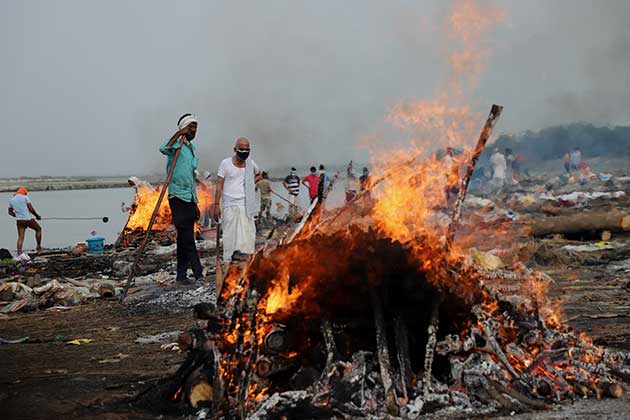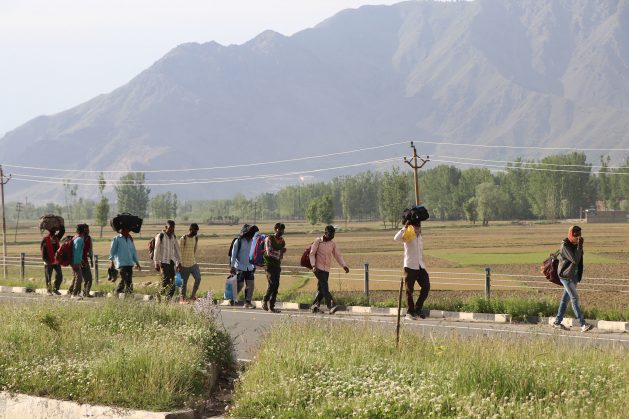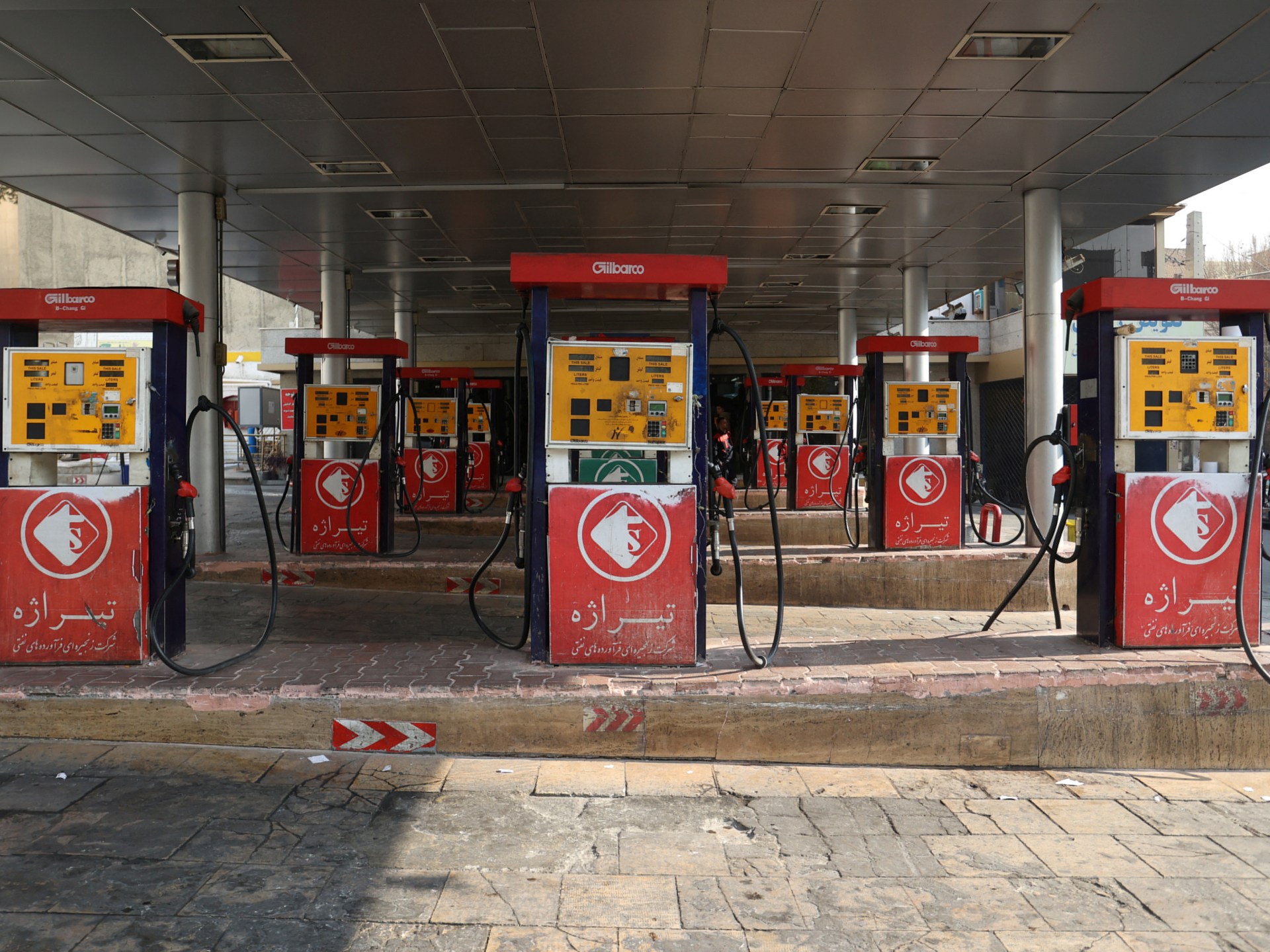Healthcare Inequities Exposed by COVID-19 Pandemic — Global Issues
NEW DELHI, Apr 29 (IPS) – Public health specialists say that an ongoing wrangle between the Indian government and the World Health Organization (WHO) over the COVID-19 death toll in this country is symptomatic of a long-ailing public health delivery system.
India has consistently challenged estimates published by leading scientific journals such as the Lancet, which placed the number of excess deaths in the country at four million from 1 Jan 2020 to 31 Dec 2021.
On 16 April an official note from the Press Information Bureau in response to a New York Times article said, “India’s basic objection has not been with the results (whatever they might have been) but rather the methodology adopted for the same.”
India’s concern was that the projected estimates in the article, titled “India Is Stalling the WHO’s Efforts to Make Global COVID Death Toll Public,” for a country of its geographical size and population could not be done in the same way as for smaller countries. “Such one size fit all approach and models which are true for smaller countries like Tunisia may not be applicable to India with a population of 1.3 billion,” the official note said.
But independent public health specialists said that the concern was that India’s spat with the WHO was detracting from the more serious issue of the country’s tottering health delivery system failing to deal with the pandemic.
“Forget about the actual number of people who died of COVID-19 or because of comorbidities like diabetes, hypertension or cardiovascular disease — the fact remains that an unusually large number of people died during the pandemic because the health delivery system was overwhelmed,” said Mira Shiva, founder-member of the international Peoples Health Movement.
“One could say that the pandemic worked like a stress test of how good healthcare services were, and they were found seriously wanting,” said Shiva. ”Unsurprisingly, it was the poor and marginalised groups that took the brunt of it all — many more died of undocumented causes than usual as reflected in the several calculations based on excess deaths.”
Shiva said that, at the best of times, a cause of death is not properly registered in India. “We can only guess from the very large number of bodies seen floating down the main Ganges and Yamuna rivers during the second wave of the pandemic in 2021. There were also widely-circulated images of bodies laid out in rows on the river banks — these were obviously of people whose relatives could not afford to buy the firewood for cremations.”
Says Satya Mohanty, former secretary in the government and currently adjunct professor of economics at Jamia Milia Islamia University, New Delhi: “You can argue till the cows come home but the figures are going to be in the range of four to five million deaths as shown in several studies and any contestation would require robust data rather than bland denials.”
“If the crude death rate on average is one per thousand per month, anything above that average over a period of two years can be safely taken as deaths due to a differentiator – in this case the COVID and post-COVID effects,” says Mohanty. “There cannot be any other reason unless other differentiators were at play and to the best of our information there were no other differentiators.”
Sandhya Mahapatro, assistant professor at the A.N. Sinha Institute of Social Studies (ANSISS) in Patna, Bihar state, says “while India has made great strides in reducing inequalities in healthcare, large access gaps by socioeconomic status remain. Our studies show that 38 percent of outpatients in Bihar, a state with a population of 128 million, had no access to public healthcare.”
“There is growing concern about the distributive consequences of welfare initiatives on different socioeconomic groups,” Mahapatro added. “The historical disadvantages of healthcare access experienced by women and marginalised groups continue, with factors like caste, class and gender intersecting at various levels to create advantage for some sections and disadvantages for others,” she said.
A paper published by Mahapatro and her colleagues in the peer-reviewed journal Health Policy Open in December 2021 showed that social status clearly determined whether a person could access healthcare or not, despite pledges to ensure equity in healthcare provision and commitment to the United Nations’ Sustainable Development Goals (SDGs) Goal 3 — providing quality health services to all at an affordable cost.
“The issue of inequity played out during the COVID-19 pandemic affecting the poor and marginalised disproportionately,” said Mahapatro. “Internal migrants were greatly affected by the lockdowns with a staggering economic burden befalling them. The pre-existing inequality has widened and is expected to further widen as a result of the pandemic.”
Mahapatro said a study conducted at ANSISS during the post lockdown period found a familiar pattern of deprivation in healthcare services as in earlier studies. “The burden of unmet healthcare needs was substantially higher among the poor, women and people of low caste,” Mahapatro said. “Unmet healthcare needs were found to be particularly high among women of lower caste groups.”
“Importantly, our studies show that the pattern of health spending has remain unchanged over the decades and that the household remains the main source of financing healthcare before and during the pandemic,” she added.
 A local priest and relative of a family member who died from Covid watching a pyre burn at the Garh Ganga Ghat in Mukteshwar, in Uttar Pradesh on 4 May, 2021. (Mukteshwar, Hapur/ File-Amit Sharma)
A local priest and relative of a family member who died from Covid watching a pyre burn at the Garh Ganga Ghat in Mukteshwar, in Uttar Pradesh on 4 May, 2021. (Mukteshwar, Hapur/ File-Amit Sharma)
“The ongoing economic crisis due to the pandemic and inadequate healthcare capacity would obviously constrain healthcare utilisation by the marginalised sections of society, with internal migrants being the worst impacted as a result of the lockdowns,” Mahapatro said.
A staggering 450 million Indians are internal migrants according to the 2011 census, 37 percent of the total population. A national lockdown imposed with a four-hour notice on 24 March 2020 left most of these domestic migrants with no option but to undertake long treks back home with little money or food.
The national lockdown, considered among the tightest globally, went into three more phases with increasingly relaxed restrictions on economic and human activity until 7 June.
“Almost 80 percent of the migrant workers we surveyed had lost their jobs during the lockdowns,” said Mahapatro. This naturally affected their ability to access healthcare, with huge nutritional implications for them as well as their women and children.”
“If the unmet needs of such large and deprived social groups are not catered to then equity in healthcare and the UN SDGs on health will remain a distant dream,” Mahapatro added.
© Inter Press Service (2022) — All Rights ReservedOriginal source: Inter Press Service
Check out our Latest News and Follow us at Facebook
Original Source







